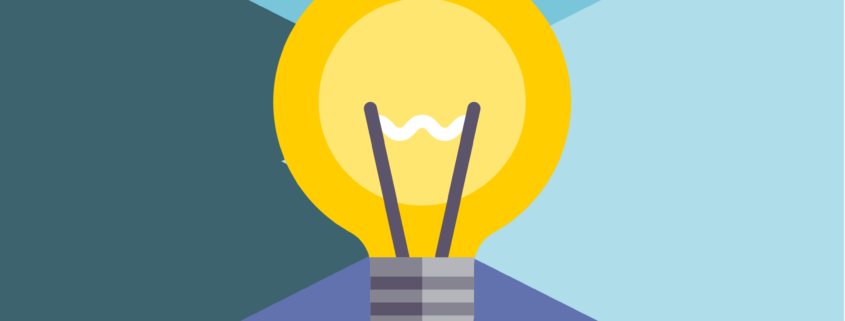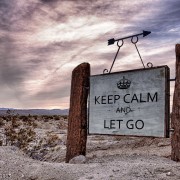Get The Most Out Of A Conference: Part 2
To get the most out of a conference, you need to have objectives, a plan to meet those objectives, and a system for processing and organizing the information you receive. These items should all be completed before you go to the conference.
All your planning and upfront work provides a foundation for success, but like anything else you need to execute. The following strategies will help you get the most out of a conference once you’ve arrived.
Arrive Early and Get Oriented
Arrive early. This sounds pretty obvious, but I’m not talking about arriving 5 minutes early…or even 15 minutes. Take a look at the conference agenda and look for the time when doors open. Sometimes this is not listed, so you might need to call. At a minimum, try to arrive 45 minutes early.
If registration is open, go ahead and check in. You might be able to do this before the official registration time too. Does this annoy the conference staff? Maybe. But that’s OK.
Once you have all registration items, walk around the conference space and identify the rooms and spaces that you will be visiting. For larger conferences, this will help you save time and worry later in the day. For smaller conferences…it’s another opportunity to possibly annoy the staff as they hurry to complete last minute setup. But that’s OK.
After you’ve gained your bearings, find a nice out of the way spot to look through your bag o’ swag. In part one of this series, I offered some tips on how to deal with that bag and that swag. But if you want the long and short of it now: get rid of what you don’t need and identify any freebies or coupons that are time-sensitive.
So now that you’ve arrived early, checked in, oriented yourself to the conference space, plucked out your happy hour tickets, and stashed your questionable phone charging accessory, you should start to see people trickling in. But more importantly…you should start to see the appetizer buffets filling up!
Take this time to once again annoy the conference staff. You can start by building a plate of fruit that ruins the caterer’s set presentation. But that’s OK. Spend this time munching, and then you’ll be free to do some hands-free, hunger-free networking as more attendees start rolling in.
With your hunger satiated, you are now ready to enjoy the conference. At this point you have some options based on your particular situation. You may want to use this time to network with other attendees, grab a front row seat for the keynote presentation, or coincidentally bump into a presenter who you really wanted to meet. Regardless of what you decide to do, you will have the time and space (in your mind) to do it.
Finally, make sure you give yourself enough time to take a good seat for the first session. Plan to be in your seat around 10 minutes before the scheduled start time for the session. Use that time to take a quick look at your objectives for the session and the day.
Listen for Key Ideas and Avoid Lengthy Notes
Conferences pack in a lot of sessions. Sessions pack in a lot of ideas. Ideas pack in a lot of information.
It’s important that you don’t try to unpack all of that.
It’s tempting to take as many notes as possible, vigorously transcribing presenters’ words and copying their slides. This approach is flawed, however, because your focus is solely on taking notes. Consider…
You may spend 5 minutes, head down, copying an idea verbatim…but what if that idea is not a good fit for your organization? You’ve wasted time and energy.
What if your notes describe ideas that your organization already implements, or has determined not to implement? You’ve received no value from your effort.
Your focus should be on connecting new ideas with your organization. For this, you need space in your mind to think about the ideas being presented, and to consider whether they could bring value to your organization. The notes you do take should be brief and powerful–just the key ideas that make you think “aha!”
By taking this approach, you allow yourself the opportunity to think about the specifics of how an idea can be implemented at your organization. Through this thought process, you may even generate “spin-off” ideas–ideas of your own that are inspired by your presenter.
You may fear that if you fail to take detailed notes, then you will lose vital information needed to sell or implement the idea. It’s true that you could miss a few important details, but most presenters are more than happy to provide you with notes or additional information upon request.
And what better way to network with a presenter than to follow up with “Hi Nancy, I really enjoyed your presentation on employee engagement, specifically your idea on using technology to streamline the onboarding process. Could you provide me with a little more information on your considerations for purchasing HR technology?
Network Responsibly and Take Breaks
Speaking of networking…conferences are great places to network. A bunch of like-minded, like-employed, like-motivated people all gathered in one place is a powerful thing. But let’s face it, even grown adults have a limit to their attention spans…enter networking.
Networking–both formal and informal–is the oil that keeps conferences moving. It can also be the silver lining in an otherwise dry presentation on HR analytics. But too much networking can easily distract you and wear you out, leaving you exhausted and unable to focus on presentations. Try the following tips for responsible networking.
5 Tips For Networking Responsibly At Your Next Conference
- Set limits. It’s not overkill to actually schedule your networking time. In fact, scheduling time to network will reinforce your sense of purpose in networking and ensure that you don’t miss out on other important activities.
- Have business cards ready, but use discretion. Have a good conversation, and if it makes sense, exchange business cards at the end of it. Don’t lead with the card…that’s presumptuous and can make a bad impression.
- Sales is a next level conversation. I know…I know… if you’re a salesperson you gotta strike while the iron is hot…make hay while there’s sun…and kill two birds with one stone. Sales are tough, but so are first impressions. Follow the same approach as with business cards. If a sales conversation makes sense, offer that at the end of the initial conversation.
- Be yourself. Unless you moonlight as an actor or actress, trying to be someone else is exhausting. Conferences can be stressful enough on their own, you don’t need to add to that by morphing into Don Draper. So be professional, kind, and considerate…and hopefully that’s pretty close to being yourself.
- Take breaks. Remember that part about scheduling your networking time? You should do the same for breaks. A break could be a walk to a nearby park or attraction. It could be exercise, like going on a run or visiting the hotel fitness facility. You might just need to go veg in your hotel room. Whatever you decide on, make sure you use some of your free time to get away from handshakes, elevator speeches, and happy hours. You’ll bring more energy to everything else.
Putting It All Together
In this short series on how to get the most out of your upcoming conference, we touched on several ideas. You’ll find that they all derive from two principles: have a plan and manage your energy. Most bad experiences can be avoided with proper planning and high energy. Follow your plan, and when things don’t go according to plan, overcome it with high energy.
ExactHire has had the honor to present at conferences in the past, and you can always find us with a vendor booth at the annual HR Indiana Conference. Whether presenting, blogging, authoring ebooks and guides, we strive to help human resources professionals improve their organizations.







